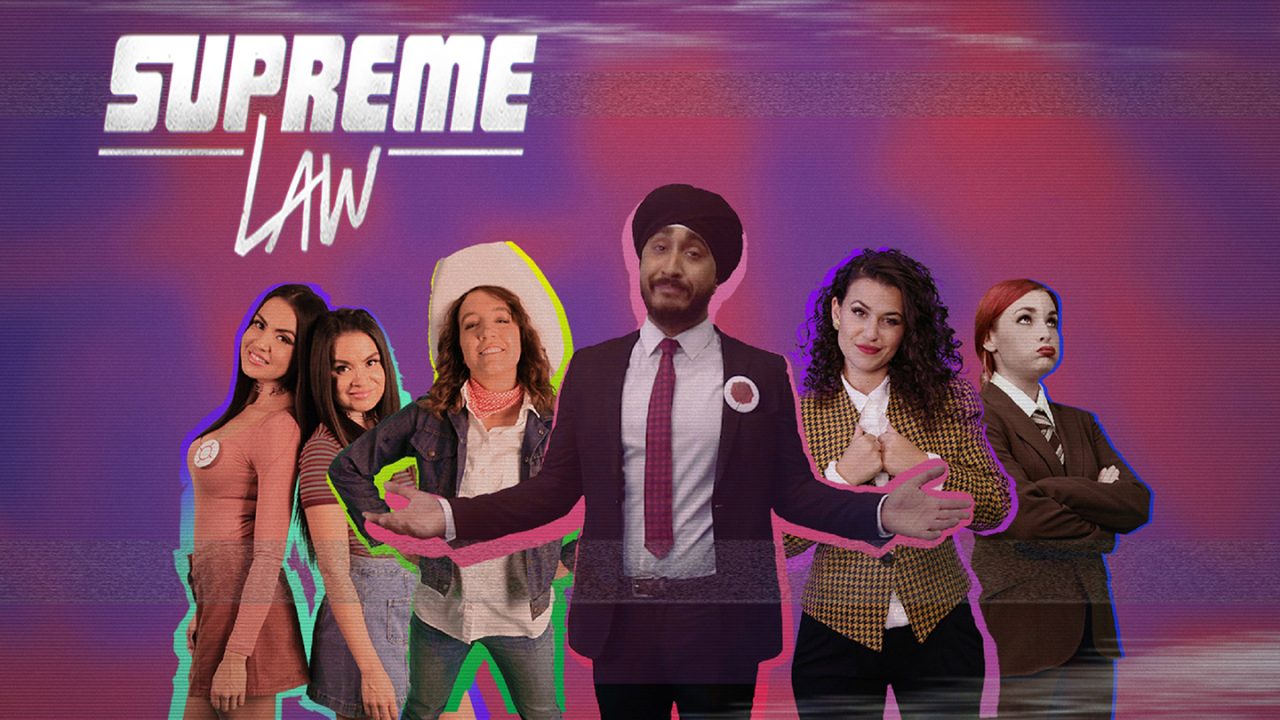
Mini-Lesson for Supreme Law
Mini-Lesson for Supreme Law
Supreme Law – Patriation of the Constitution: One Event, Five Perspectives
Theme: 1982 Patriation of the Canadian Constitution
Ages: 12-14
Keywords/Topics: 1982 Patriation of the Canadian Constitution, Charter of Rights and Freedoms, Gang of Eight, Night of Long Knives, Indigenous Rights, Women’s Rights, Pierre Elliot Trudeau, René Levesque, Peter Lougheed
Guiding Question: Who writes history and whose accounts of history should we read? How does your identity impact how you view historical or current events?
Summary: The interactive Supreme Law website allows teachers and students to explore how perspectives on the 1982 Patriation of the Canadian Constitution can differ across the country. Entertaining videos created by Canadian YouTube stars help students learn more about patriation and the Constitution. Students can explore how one event had important long-term impacts on national identity, human rights, and federal-provincial relations.
Activity 1) Open question
Pre-screening activity:
Give students a basic fairy tale with which they are familiar. In small groups, have students brainstorm how the story would be different if told from the perspective of another character. Then, have students discuss how history can be viewed from different perspectives. For instance, the Vietnam War is known as the American War in Vietnam. What are the implications for history-telling?
How can one event be seen in multiple ways?
Have students watch at least three of the different perspectives on the Supreme Law website. After each segment, students should write down four to five important points about why the Charter was significant to that group. Have students complete the sentence: “For _______, the 1982 patriation was _______ because it _______ and it _______.” Are any perspectives more valid than others? What are the impacts today of these different viewpoints? Students can also consider how patriation is presented in their textbook (if available). How might this presentation be different across the country?
Go Deeper
Whose perspectives are missing from this website? Who else would you like to hear from? Are there any current news stories that are likely playing out in different ways across the country? Brainstorm a few and have students find related articles. (Students can also keep in mind that many news outlets are owned by the same conglomerate across the country. Does this impact regional voices or not?)
Activity 2) Open question or “rank and order”
What are the most effective ways to influence government decisions?
Have students rank and order the following activities by most effective in influencing government. Extend this by then having students rank the activities that they would be most likely to participate in themselves:
- Write letters to your Member of Parliament
- Meet with your Member of Parliament
- Use social media
- Start a petition
- Stage a protest rally and invite the media
- Join a political party
- Present yourself for election
- Participate in a sit-in protest at a key location
Go Deeper
After this activity, students can watch the section of the Supreme Law website on women and discuss how women ensured that their voice was heard in 1982. How important do they think it was that women had some voices within Parliament who were on their side? In our modern world, do people have more or less of an impact on government officials? Students could then research how women, or another group, are currently aiming to ensure that their concerns are heard at the national level. The “Deep Dive” section on Charter Rights also holds substantial information on how a variety of rights have been established in a post-Charter Canada.
Activity 3) Classroom activity
How does our identity impact how we view history? How can you have your story heard?
Give students an imaginary scenario in which they want to make a change at their school but the administration is not listening. What could they do to make their voices heard? What advantages could be had from taking their advocacy beyond the school community?
Have students watch the Supreme Law section on Indigenous Perspectives on the Constitution. Have them rank the actions taken by Indigenous Peoples in 1982 by greatest impact.
- Advocacy train across the country
- Taking their concerns to the United Kingdom
- Taking their concerns to the United Nations
- Speaking out at Parliamentary committees
- Encouraging grass-roots participation from Indigenous communities across the country
What were Indigenous Peoples advocating for during the patriation process? What is section 35 in the Constitution? Discuss if section 35 met the requests that Indigenous Peoples lobbied for. Why is it significant that Canada recognizes collective Indigenous rights?
Go Deeper
Have students consider why Indigenous groups wanted to be considered as nations. Can there be multiple “nations” within one country? Have students look up information on current Indigenous advocacy groups within their own community. They could compare current action to the advocacy work described in the Supreme Law website.
Carla McIvor currently teaches Social Studies at West Island College in Calgary, Alberta. She has also taught courses ranging from Philosophy to Comparative Government in British Columbia and Ontario. Carla has a B.A. in Political Science from McGill University, a B.Ed. from University of Ottawa and a master’s degree in International Relations from the University of Geneva.
Pour lire cet article en français, cliquez ici.
Discover more Mini-Lessons | Watch educational films on NFB Education | Watch educational playlists on NFB Education | Follow NFB Education on Facebook | Follow NFB Education on Pinterest | Subscribe to the NFB Education Newsletter






